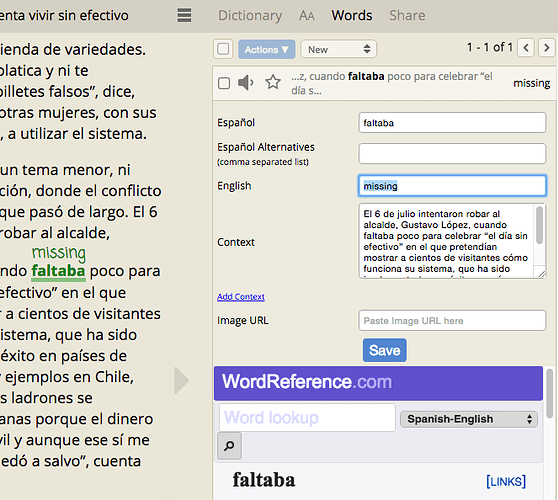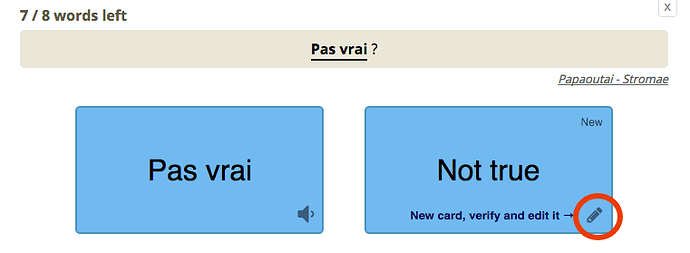Wow!!!, I just tried it and works great!, and really impressive how fast you integrated that as a new feature. Kudos!!!
Here’s another idea for you to ponder…
I understand currently Readlang keeps track of the word/phrase, and a bunch of translations of that word/phrase (1…*) and also a bunch contexts associated to that word/phrase. But not sure it saves the link between translation and context.
If Readlang can keep track of context-specific translations, I think that could make the Flashcards and the Blitz mode practice much better. Here’s why:
For words with multiple translations, the flashcards show (I think) all of them. Sometimes they are rather synonyms, but sometimes words can simply have very different meanings according to the context, and having all those alternatives presented might be confusing. If Readlang keeps track of the context-specific translations, it could show only the context-relevant translations, IMHO, leading to a cleaner and more effective studying experience.
Just a silly example to illustrate what I mean. If you have saved the word “gato” in Spanish, I think it is better to practice each of these flashcards separately,
Context: "Mi gato duerme en el sofá todo el día."
Translation: cat
Context: "Necesito un gato para cambiar la llanta del coche."
Translation: car jack
instead of getting both translations at the same time (“cat / car jack”) as it would work nowadays.
So, yeah, again, it’s just an idea for you to ponder. I do not want to come across as putting pressure to add features all the time. It just seems to me that with much better context-aware translations now, you can keep track of that link and take advantage of it to improve the overall experience for Readlang users.


